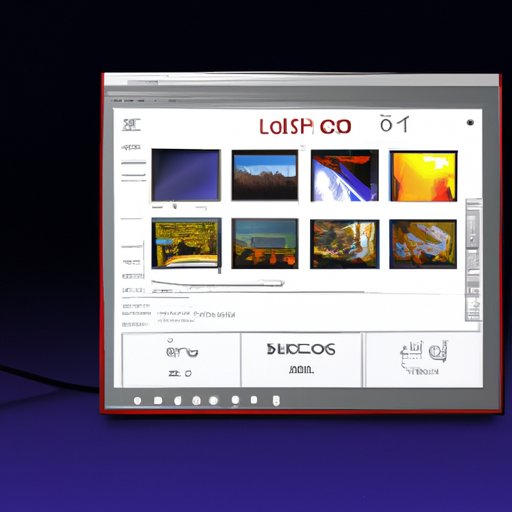Introduction
Windows Media Player is a media library application developed by Microsoft that allows users to play audio and video files, organize digital media collections, burn CDs, stream music and videos, and listen to internet radio stations. It is available as a part of the Windows operating system, with versions for both Windows 10 and earlier versions such as Windows 7.
The purpose of this article is to provide a comprehensive guide on how to play music in Windows Media Player. We will cover topics such as downloading music files, creating and managing playlists, transferring music from CDs, streaming music, and playing internet radio stations.
Download Music Files to Windows Media Player
The first step to playing music in Windows Media Player is to download music files. There are many online sources of music available, such as iTunes, Amazon Music, Spotify, and YouTube. Each source has its own set of rules and restrictions, so it’s important to familiarize yourself with them before downloading music files.
Once you’ve found the music you want to download, you can either purchase the file or download it for free (if it’s available for free). Depending on the source, the file may be downloaded directly or you may need to use a third-party download manager. Once the file is downloaded, you can add it to your Windows Media Player library.
To add the music file to your Windows Media Player library, open the application and select “Add to Library” from the File menu. Select the location of the file you just downloaded and then click “OK”. The file should now be added to your library and ready to play.
Create and Manage Playlists in Windows Media Player
Once you’ve added music files to your Windows Media Player library, you can create and manage playlists. A playlist is a collection of songs that you can save and play back at any time. This is a great way to organize your music and make it easier to find what you’re looking for.
To create a new playlist, open Windows Media Player and select “Create Playlist” from the File menu. Give your playlist a name, then drag and drop songs from your library into the playlist window. When you’re done, click “Save” to save the playlist.
You can also add songs to an existing playlist by dragging and dropping them into the playlist window. To delete songs from a playlist, simply select them and press the Delete key. You can also rearrange songs within a playlist by dragging and dropping them into the desired position.

Transfer Music from CDs to Windows Media Player
Another way to add music to your Windows Media Player library is to transfer it from a CD. This process is known as “ripping” and it allows you to copy the music from the CD onto your computer. To rip a CD, insert it into your computer’s CD drive and wait for Windows Media Player to detect it.
Once the CD has been detected, click the “Rip” button in the top right corner of the window. Windows Media Player will then begin to rip the music from the CD and add it to your library. You can also choose to automatically organize the music files by artist, album, or genre.

Stream Music with Windows Media Player
In addition to downloading and transferring music, you can also stream music with Windows Media Player. Streaming services such as Spotify, Apple Music, and Google Play Music allow you to listen to a wide variety of music without having to download individual files.
To connect to a streaming service, open Windows Media Player and select “Connect to a Service” from the File menu. Choose the streaming service you want to use and then follow the instructions to sign up and log in. Once you’ve logged in, you can start streaming music.
In addition to streaming music from services such as Spotify and Apple Music, you can also stream music from services such as YouTube and SoundCloud. To do this, simply search for the song or artist you want to listen to and then click the “Play” button.

Play Internet Radio Stations in Windows Media Player
Finally, you can also play internet radio stations in Windows Media Player. Internet radio stations are online streams of music from around the world. To access these stations, open Windows Media Player and select “Find Internet Radio Stations” from the File menu.
You can then search for a station by genre, country, language, or keyword. Once you’ve found a station you like, click the “Listen” button to begin streaming the music. You can also save the station to your list of favorite stations for easy access later.
Conclusion
In this article, we have explored how to play music in Windows Media Player. We discussed topics such as downloading music files, creating and managing playlists, transferring music from CDs, streaming music, and playing internet radio stations.
By following the steps outlined in this article, you should now be able to easily play music in Windows Media Player. With a little bit of practice, you’ll soon be a pro at navigating the Windows Media Player interface and playing all of your favorite music.
(Note: Is this article not meeting your expectations? Do you have knowledge or insights to share? Unlock new opportunities and expand your reach by joining our authors team. Click Registration to join us and share your expertise with our readers.)
